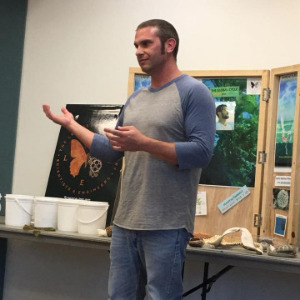Jul 17, 2020
Small-scale Expression and Solubility Testing of Proteins in BL21 E. coli
- 1J. Craig Venter Institute, Synthetic Biology & Bioenergy Group

Protocol Citation: Vincent A Bielinski 2020. Small-scale Expression and Solubility Testing of Proteins in BL21 E. coli . protocols.io https://dx.doi.org/10.17504/protocols.io.261geojkwl47/v1
Manuscript citation:
Modified from Savitsky et al 2010
License: This is an open access protocol distributed under the terms of the Creative Commons Attribution License, which permits unrestricted use, distribution, and reproduction in any medium, provided the original author and source are credited
Protocol status: Working
We use this protocol and it's working
Created: April 23, 2020
Last Modified: July 17, 2020
Protocol Integer ID: 36106
Abstract
Scaled-down solubility screen for bacterial overexpression constructs.
Attachments
Guidelines
Use standard asptic techniques and proper PPE. Dispose of waste and used culture medium as appropriate.
Materials
Lysis Buffer
50 mM NaH2PO4 (pH 7.5-8.0)
500 mM NaCl
0.1% Trition X-100
10 mM imidazole
1 mg/mL lysozyme
10 uM Beta-mercaptoethanol
1 EDTA-free Protease inhibitor tablet/10mL buffer
Wash Buffer
50 mM NaPO4 (pH 7.5-8.0)
500 mM NaCl
30 mM imidazole
Elution Buffer
50 mM NaPO4 (pH 7.5-8.0)
500 mM NaCl
250 mM imidazole
TALON resin (Takara)
Safety warnings
BME can smell noxious and be an irritant, so use a chemical hood when preparing stock for Lysis Buffer.
Before start
Make sure you have fresh buffers and keep samples on ice when noted.
Screening
Screening
Grow and induce BL21cells in medium of your choice with appropriate temperature and inducer conditions. We often use Teriffic Broth and culture cells at 30 oC, with induction carried out at 18 oC overnight (1mM IPGTG or 0.5% L-arabinose).
Harvest 10 mL overnight expression culture by centrifugation for 10 minutes at 3000 x g.
Remove supernatant by decanting and resuspend pellet in 800 uL Lysis Buffer. Transfer cell suspension to to a new 1.5 mL Eppendorf tube and store on ice.
Sonicate as appropriate for complete cell lysis (settings will depend on make and model of your sonicator).
Clarify lysates by centrifugation at 4 oC for 10 minutes at 12-15000 x g.
While lysates are spinning, equilibrate the Talon resin by washing 3x with 5 volumes of resin bedding.
NOTE: For each pulldown you do, you will need 25 ul of equilibrated Talon resin.This comes supplied as a 50% slurry in ethanol, so calculate how many pulldowns you will be doing and then add 50 uL. If you have 8, estimate you will need enough for 10 pull-downs. To equilibrate, shake the slurry well and remove 500 ul resin slurry with pipette. Transfer slurry to new Eppendorf tube. Pellet resin by spinning in microfuge for 30 seconds at 3000 x g, then remove supernatant carefully and add 1 mL of Lysis Buffer. Vortex resin briefly, then pellet again and wash beads 2x more with 1 mL of Lysis Buffer. After the third spin, remove supernatant and add 250 uL of Lysis Buffer to produce 500 uL of equilibrated resin.
Transfer 750 uL of clarified supernatant to a new Eppendorf tube.
Add 50 uL equilibrated resin to each Eppendorf tube and incubate for 1 hr at RT with end-over-end mixing.
After 1 hour, pellet resin with 1 min 3000 x g spin at RT, then remove supernatant with piepette.
Wash resin 3x with 1 mL of Wash Buffer, pelleting resin between each wash and removing supernatant.
After third wash, remove supernatant and resuspend resin in 50 uL of Elution Buffer.
Incubate at RT for 5-10 minutes, then quickly spin down beads and transfer eluate to clean Eppendorf tube.
Repeat elution again, combining eluates in single tube at the end (100 uL eluate).
Analyze 5-10 uL of eluate on an SDS gel and stain with Coomassie blue.

